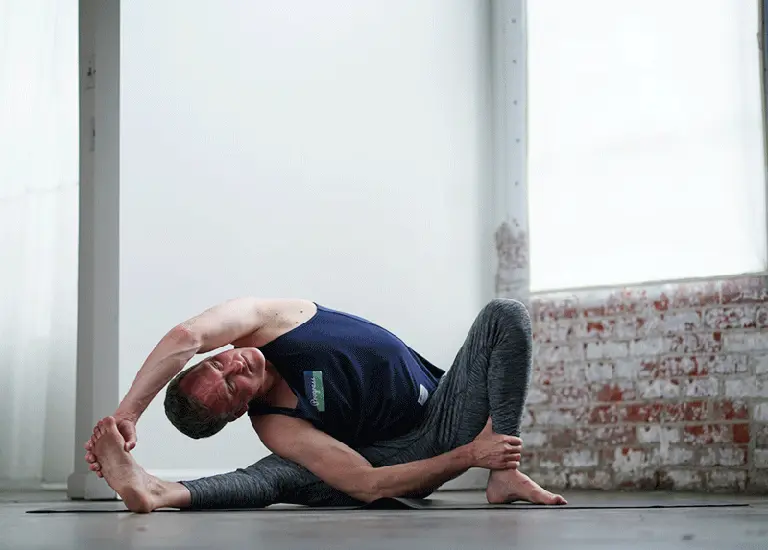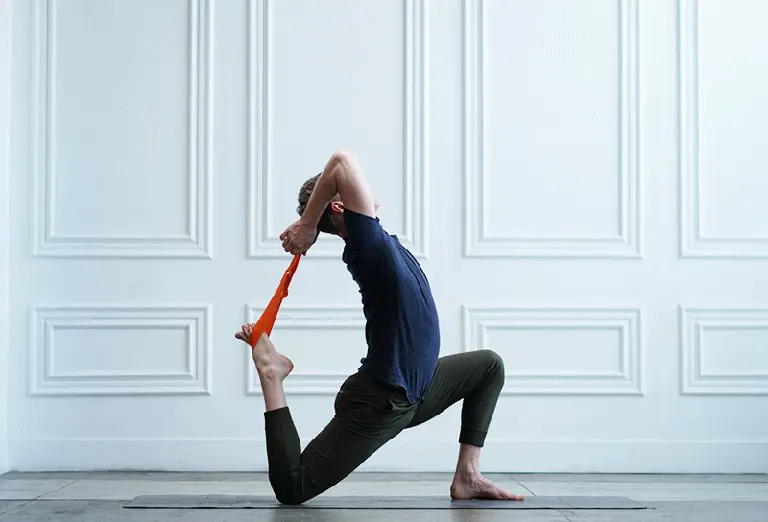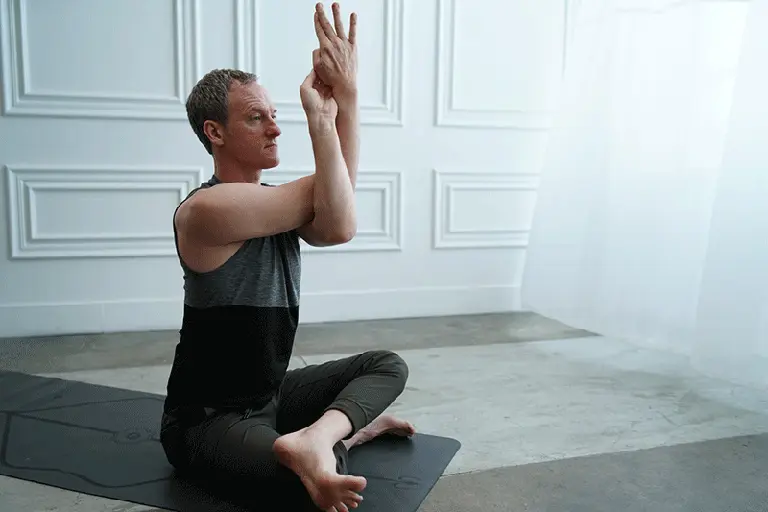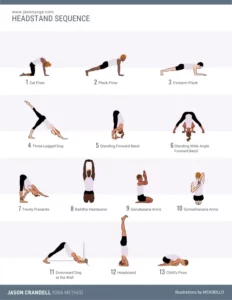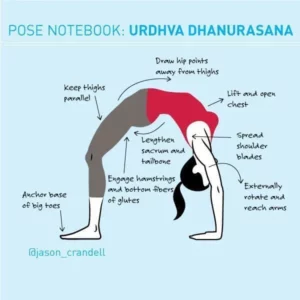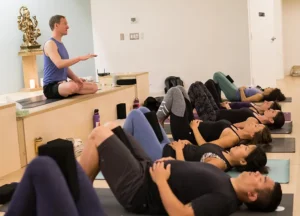Why should you read my advice on backbend preparations? Simple: because my backbends are average at best. This means that, A) my backbends are probably similar to yours, and, B) since backbends don’t come easily for my body, I’ve been struggling to figure out effective ways to deal with these #@#% poses for more than two decades.
Related: Andrea and Jason Share Their “Easy” & “Hard” Poses
Below, you’ll find four of my favorite uncommon backbend preparations. If you’ve done your homework, you know that common backbend preparations include hip flexor and quad opening, posterior hip strengthening, and shoulder opening. In addition to these staples, here are my favorite four overlooked preparations:
4 Unconventional Backbend Preparations
1. TARGET YOUR TIGHT SPOTS WITH LOW INTENSITY
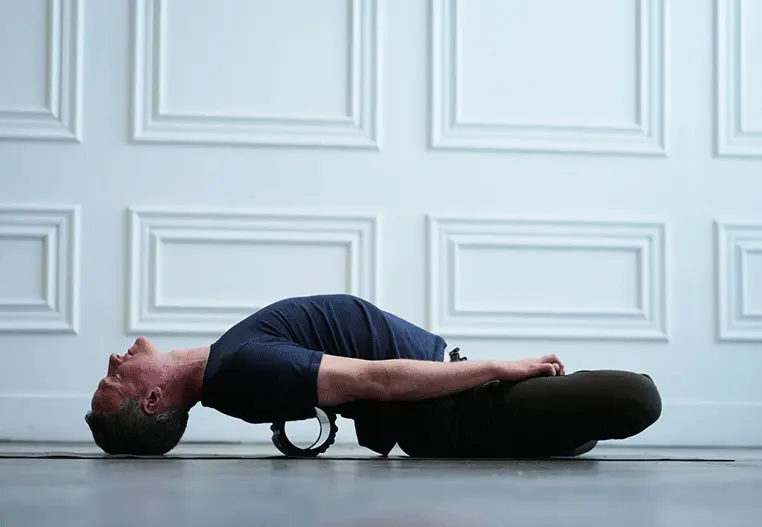
This concept is simple: After doing all of your standard backbend preparations, spend additional time focusing on the parts of your body that need more support. After all, it’s unlikely that your entire body needs the exact same amount of preparation. I always spend extra time opening my hip-flexors and upper-back. When you do this, be mild and resist the temptation to be heavy handed. Use a roller, blanket, or chair–or any other prop–that helps your tightest spots release. Remember to take your time and be patient with yourself.
2. LENGTHEN YOUR SIDE BODY–ESPECIALLY YOUR LATS
Opening your side body, especially your lats, is the most overlooked unconventional preparation for backbending. Why? Your lats have several functions, including pulling your arms down and toward your body. Tight lats inhibit the shoulders from moving into full-flexion (the action of reaching the arms overhead). This means that creating more length or flexibility will help you reach your arms overhead more easily. This preparation is less important for backbends where you reach your arms behind your body like Bow, Bridge, and Camel Pose. But, for backbends where you reach your arms overhead like Upward Facing Bow, lengthening the lats with side bends can make a significant difference.
One quick note: To target your lats more specifically in a side bend like the one photographed above, focus on bending your top elbow toward the ceiling. This will help you target the stretch opening where it matters most.
3. FOCUS ON EXPANDING THE CIRCLE, NOT SHRINKING IT:
This is a concept that I use all the time, especially in more challenging backbends like the Pigeon Pose II pictured in the photograph. The concept is to make a larger circle, not a smaller one. Here’s the deal: It seems like everyone—especially on social media—is hellbent on bringing their hands and feet closer together in backbends—thus, making a “smaller circle.” In the case of Pigeon II, this means bringing the hands further down the belt toward the feet. That’s fine when it’s your final, deepest version of the backbend — but not when you’re doing your preparation! First, you want to do a few preparatory rounds of the same posture where you don’t go to your absolute edge. When you’re there, allow your body some time to breath and settle into the shape without applying maximum stress.
So, here are the takeaways:
1) Do multiple rounds of the same posture, especially when it’s a harder posture. Strangely, we only seem to do this for Urdhva Dhanurasana (or Full Wheel).
2) In these rounds, do not take your hands and feet as close together as they’ll go in the final round. Keep the circle you’re making a little bigger for a little longer. Let your body adapt and settle.
3) Finally, consider that this bigger circle—which provides you more space and comfort—may just be as valuable as a smaller circle that gives you less.
4. OPENING THE HEART IS MORE THAN MEETS THE EYE:
Associating backbending with “heart-opening” obscures one key point: your heart, whether you’re talking about the literal organ or referring to your emotional landscape, is multi-dimensional. Physically “opening the heart” almost exclusively refers to releasing tension in front of the heart region. But, this region is 3-dimensional, so it’s equally important to open the sides and the back of the heart—especially when you’re preparing for backbends.
On the surface, opening the back of the heart to prepare for backbends seems counterintuitive. But, lengthening the muscles between your shoulder blades is one of the most overlooked and effective preparations that you can give your body. Yes, you should still focus on opening the front of your chest when prepping for backbends, but don’t overlook the unconventional process of releasing your upper back.
Here’s why: when you reach your arms overhead in backbends, your shoulders blades need to laterally rotate. This means that your shoulder blades need to spread apart and raise (slightly). If the muscles that line the space between your shoulder blades are restricted, they won’t be able to move sufficiently. When the shoulder blades are restricted, you’ll have less flexion in your shoulders (the movement of the arms overhead) and your backbends will be stifled.
In addition to opening the front of your shoulders and chest, incorporate counterintuitive shoulder openers like Garudasana arms (pictured here) in your backbend preparations. Mobilizing your shoulder blades to laterally rotate will complement all the more common shoulder and heart openers that you may also be doing. If you do, I’d love to hear how it goes for you.
